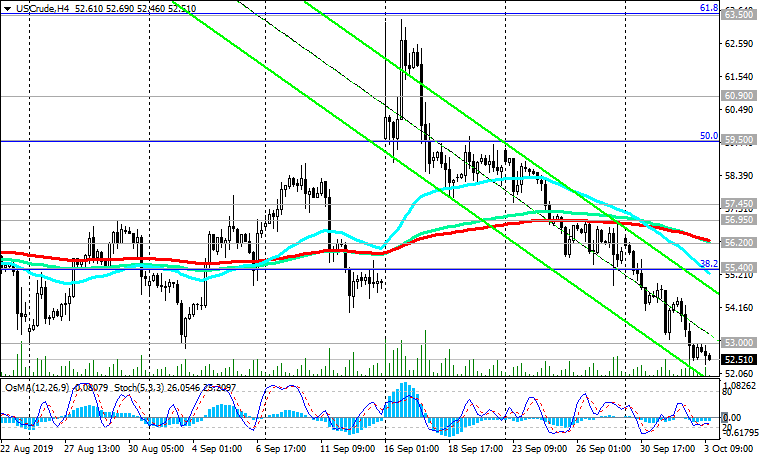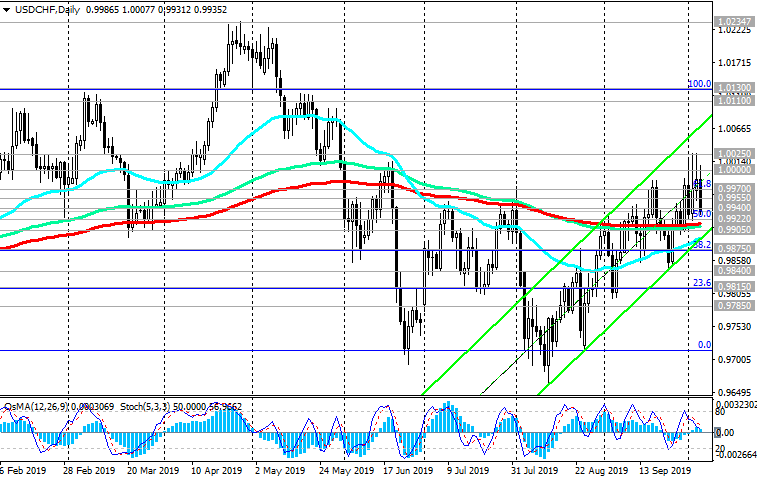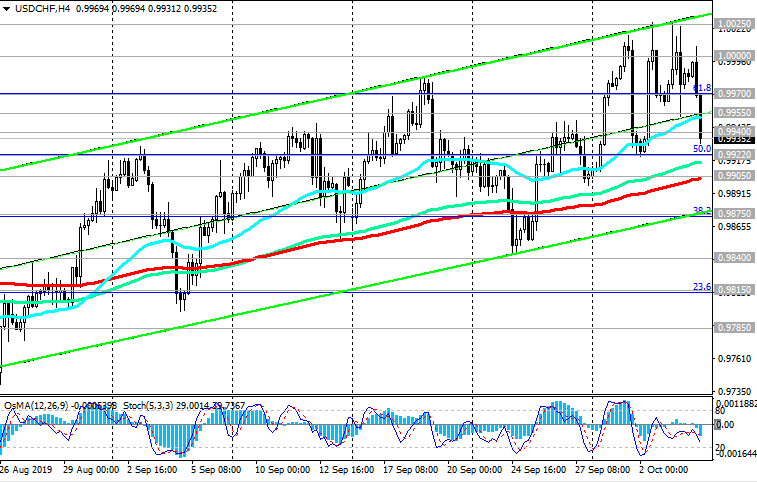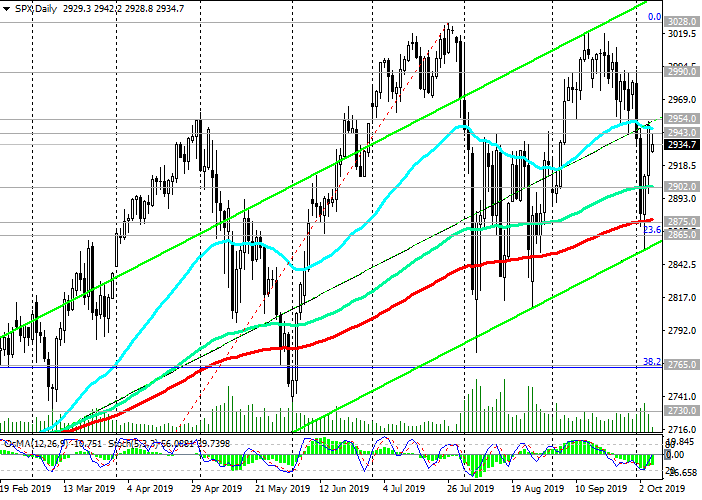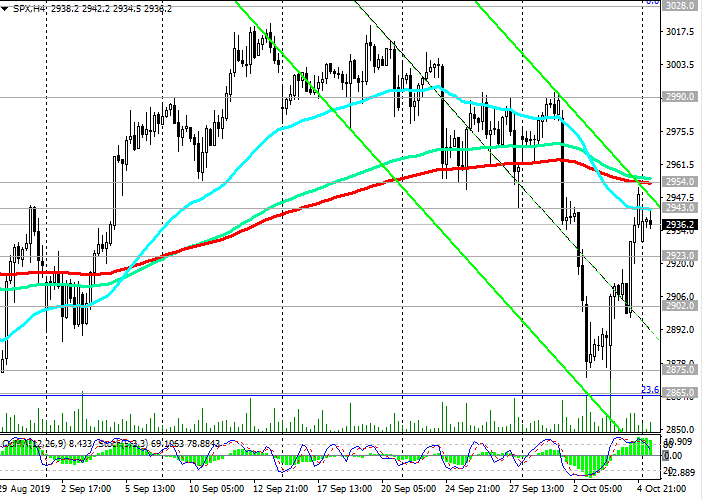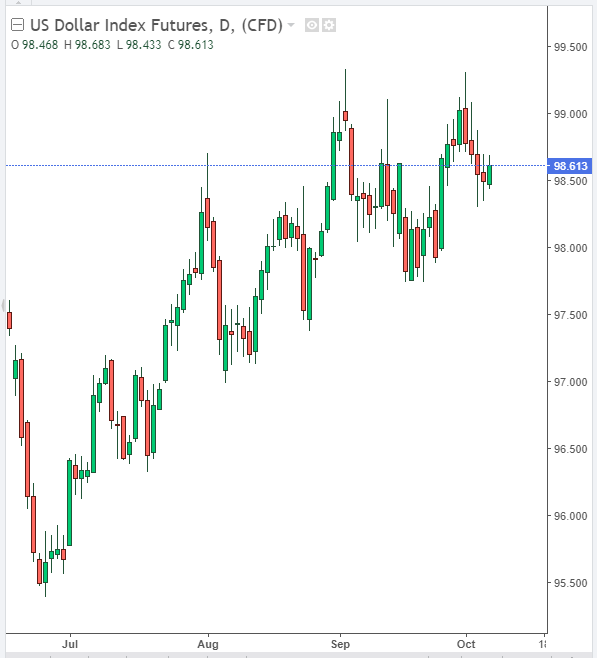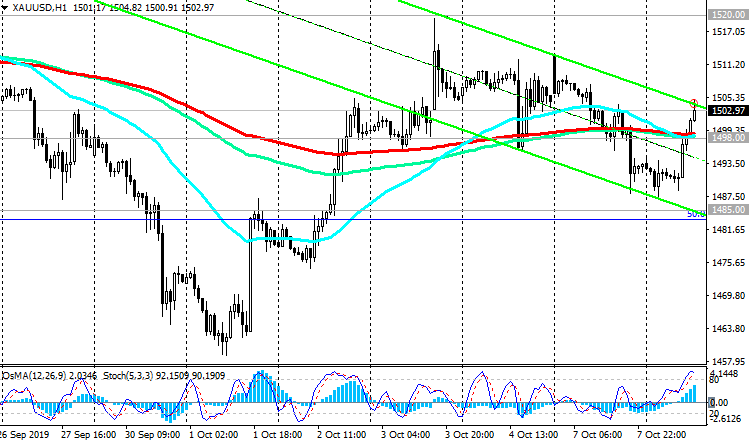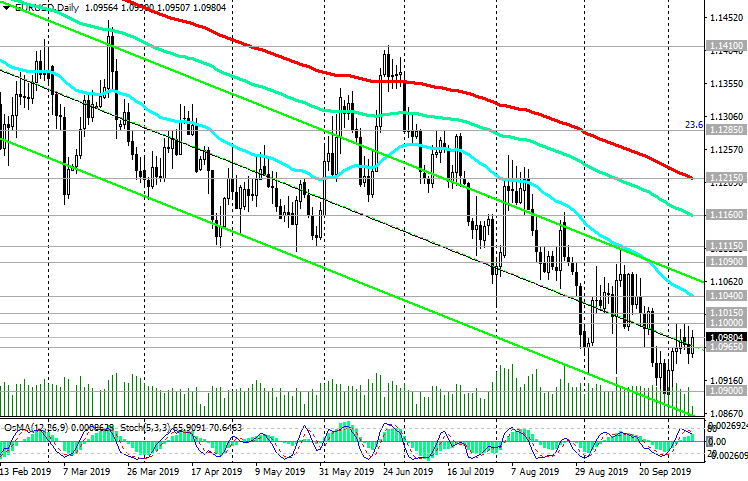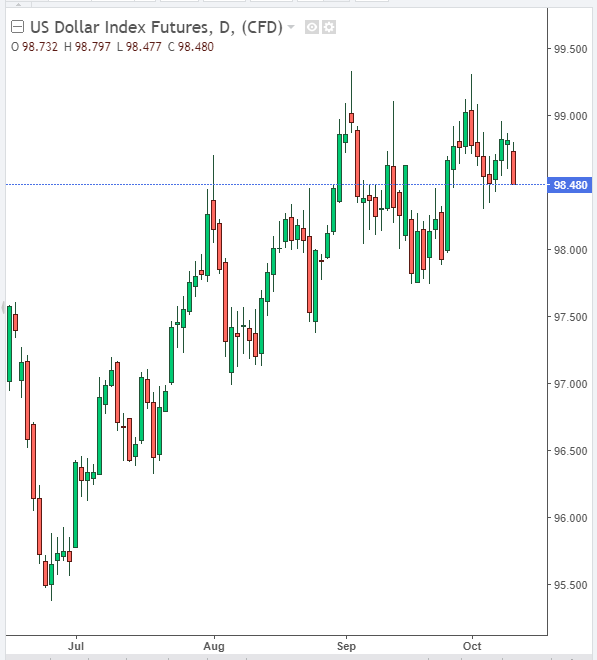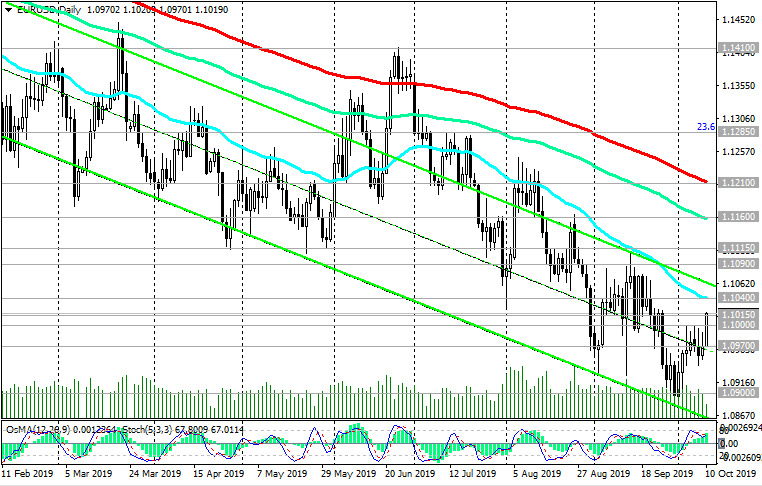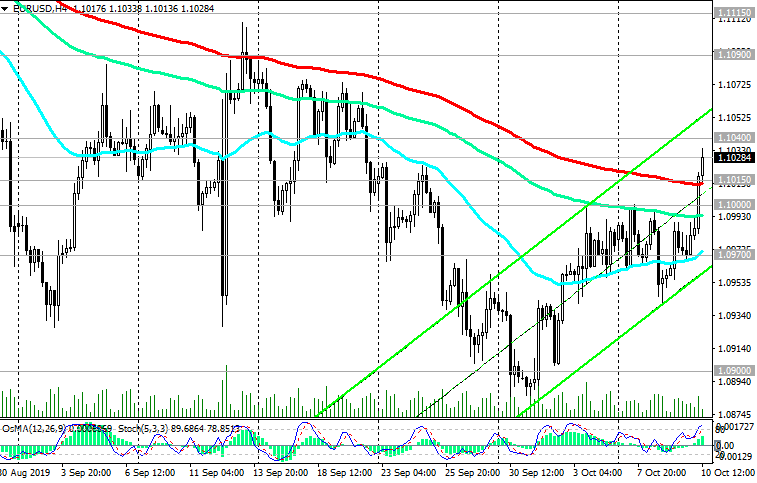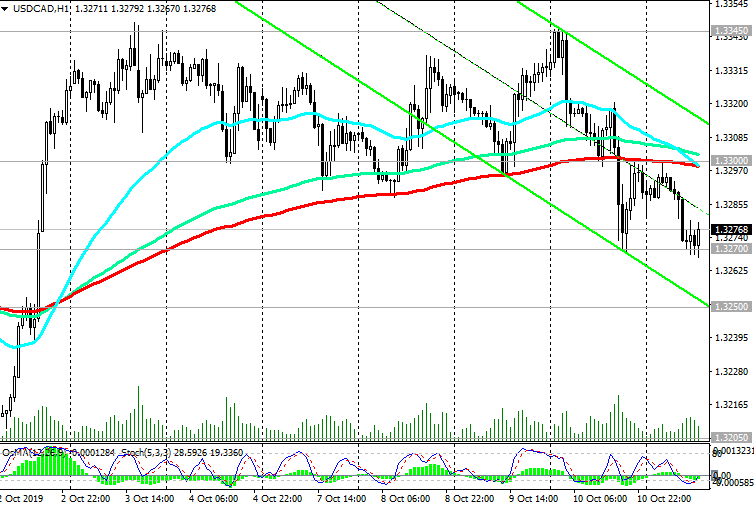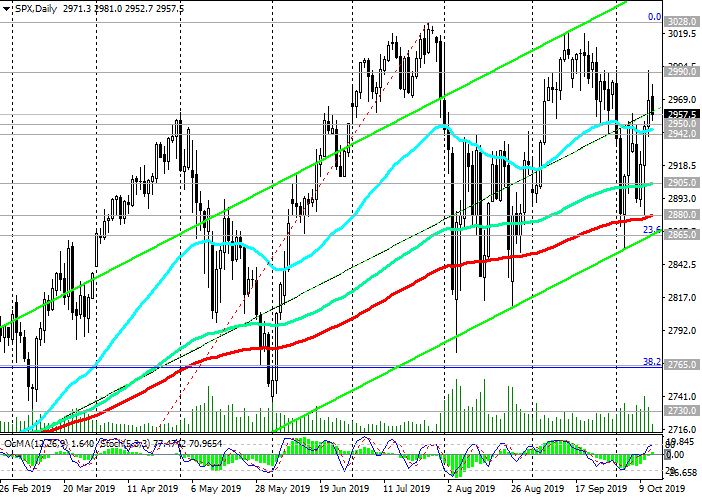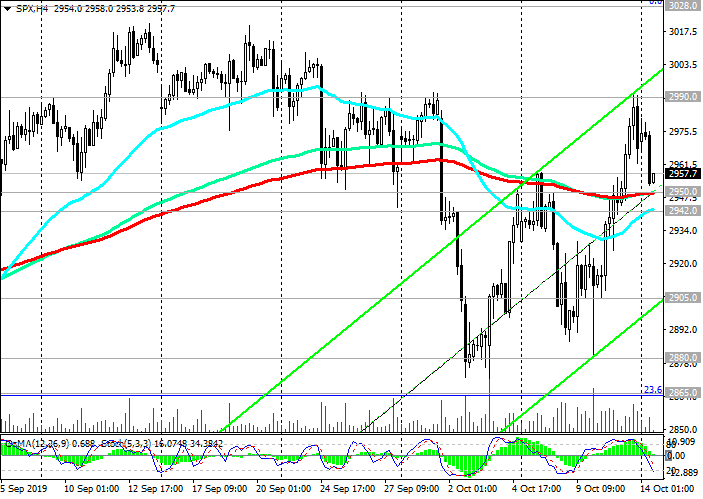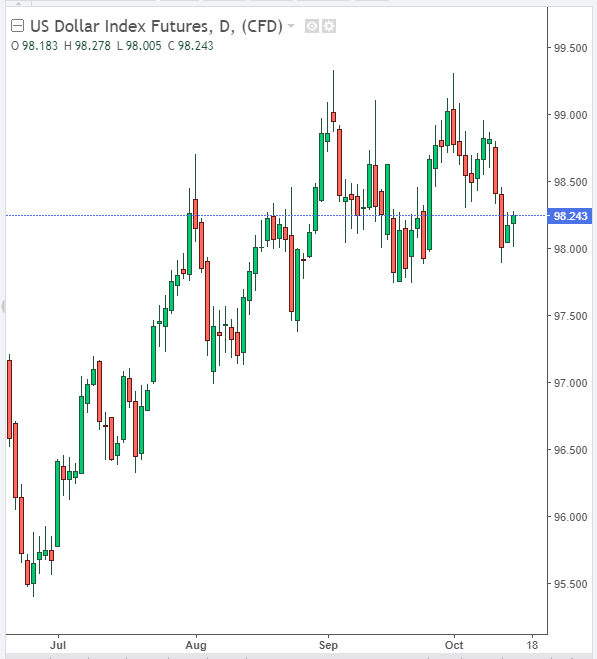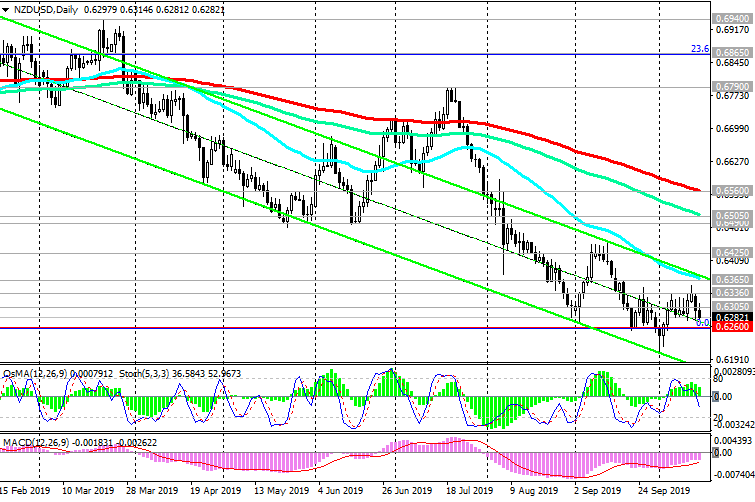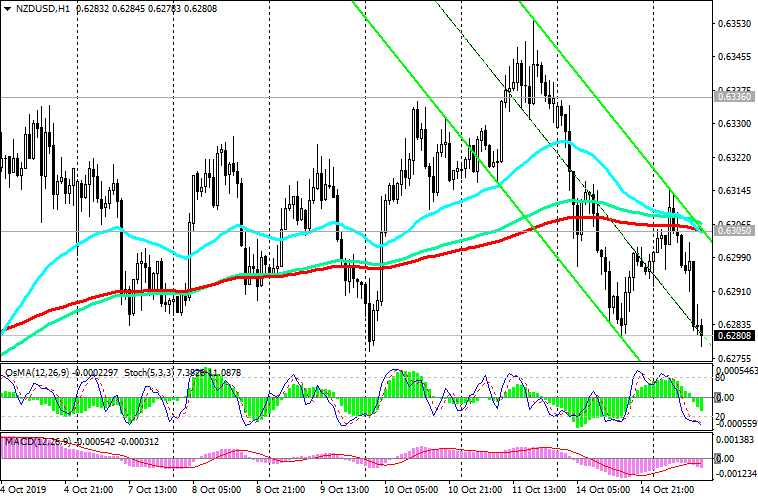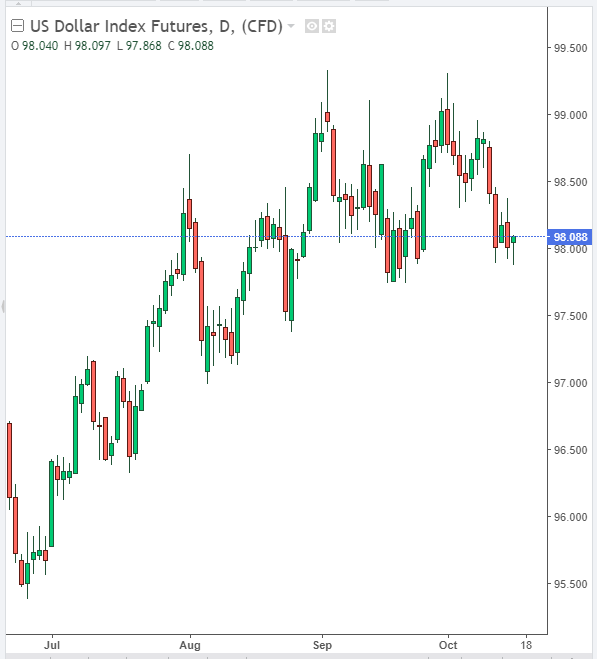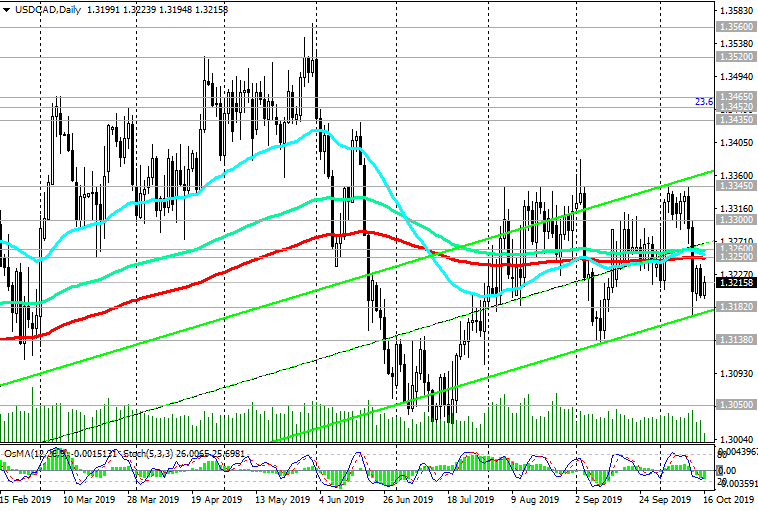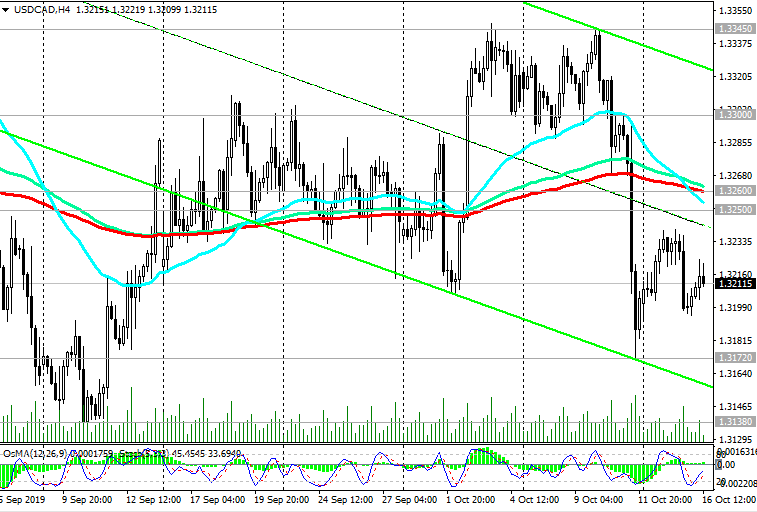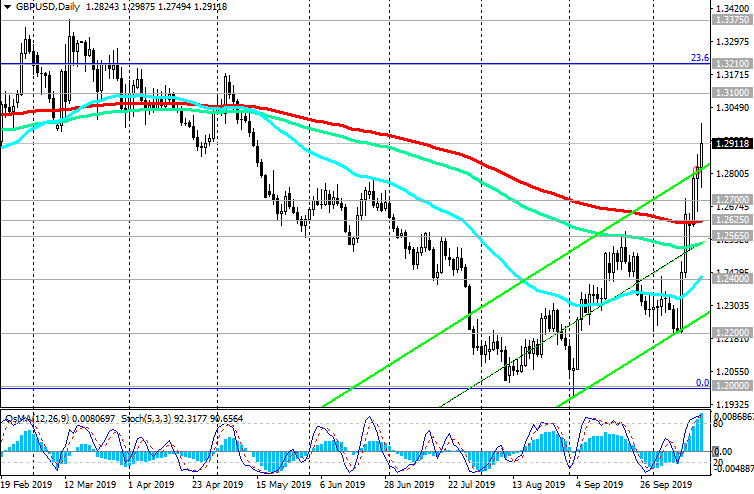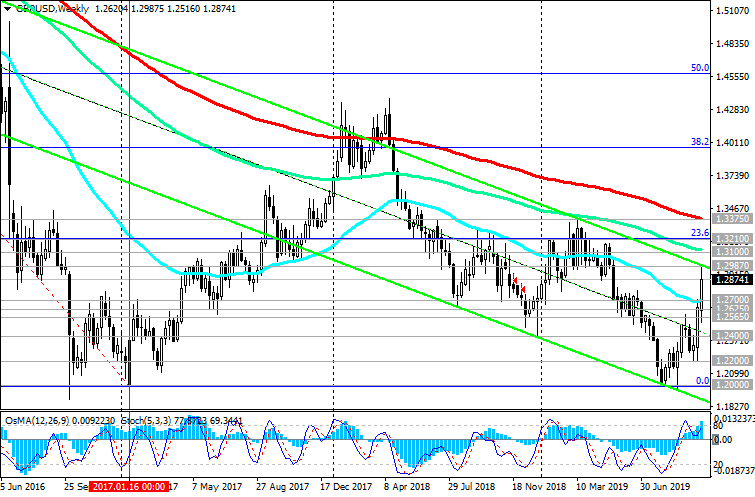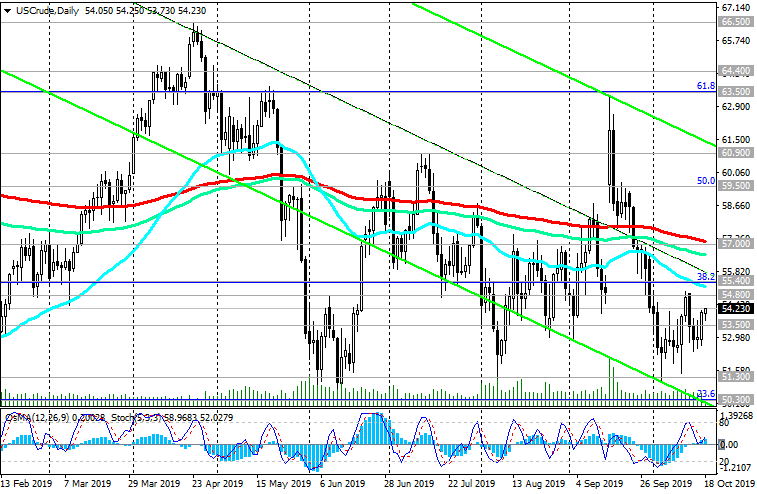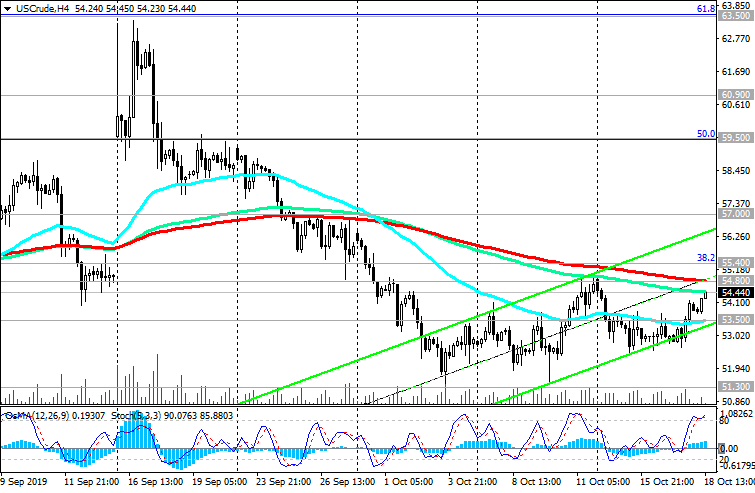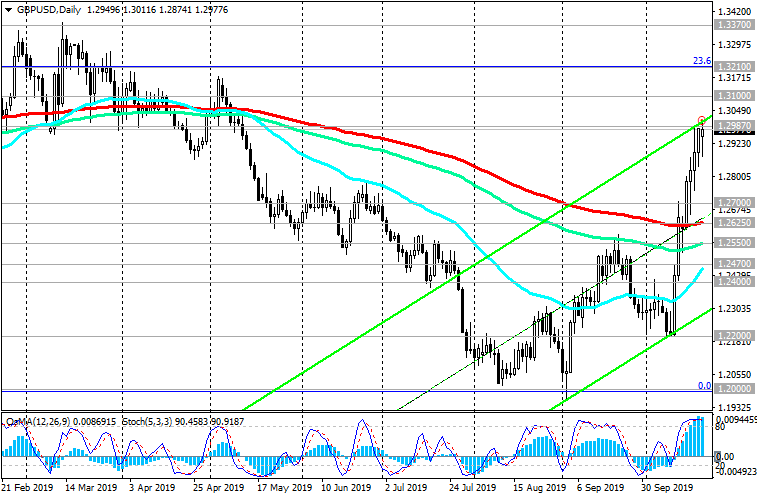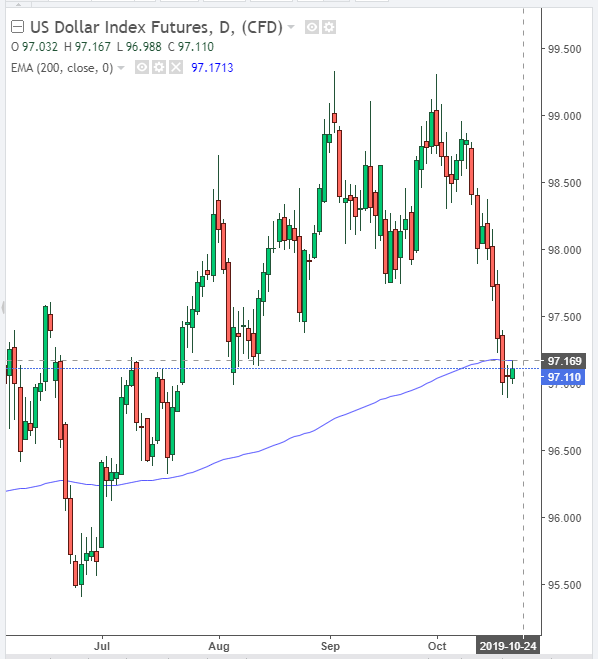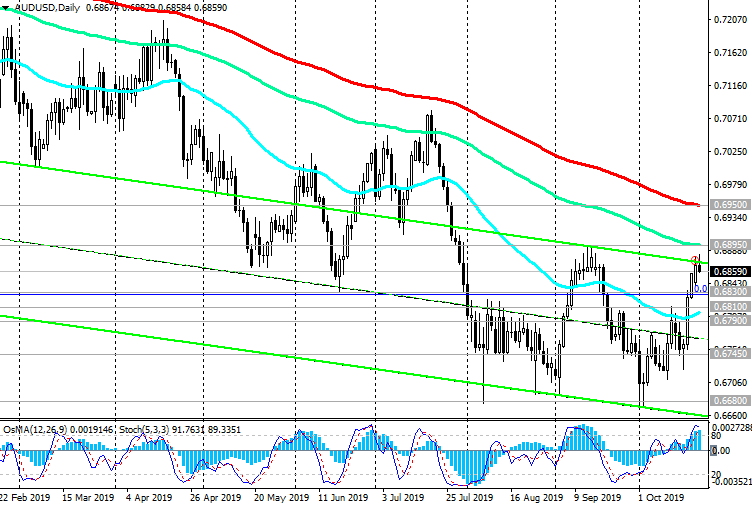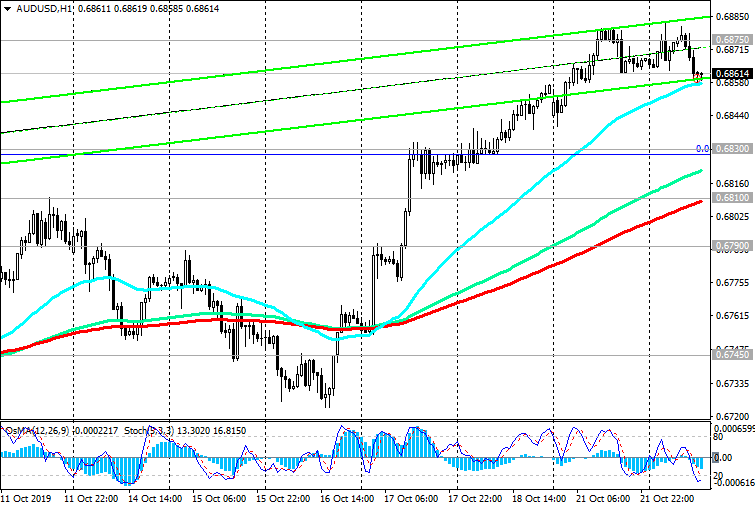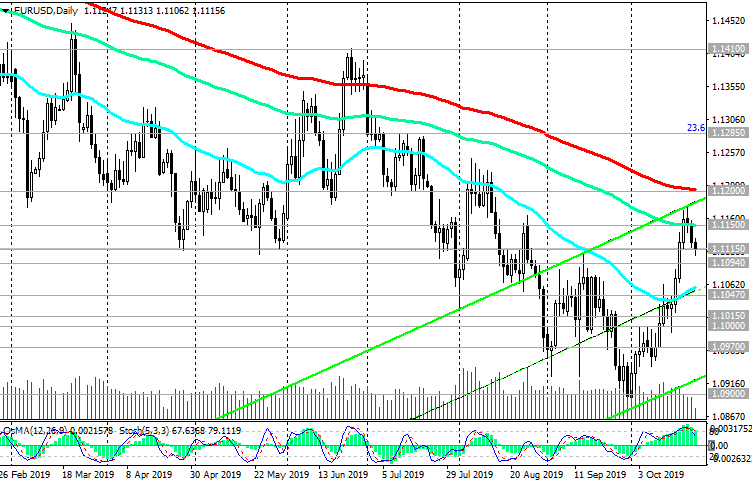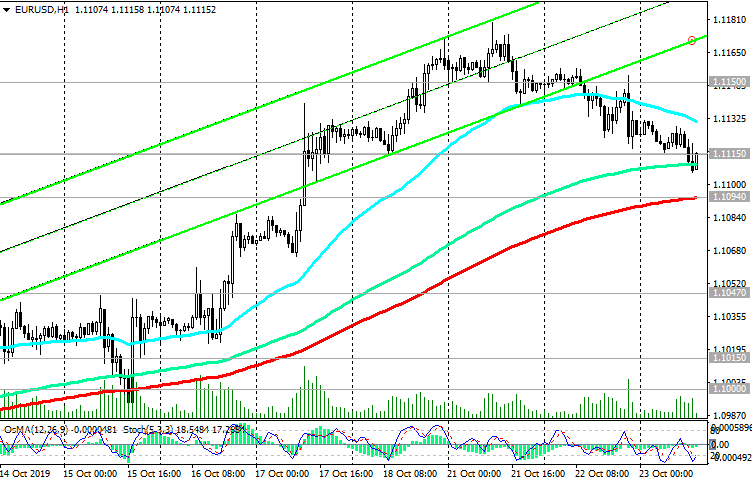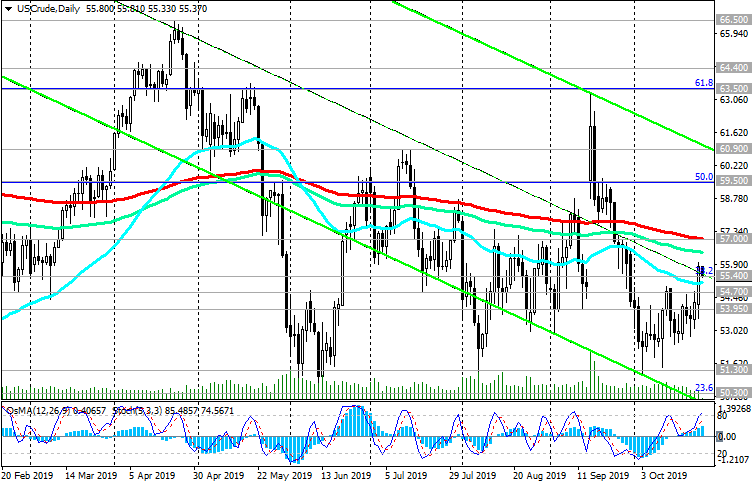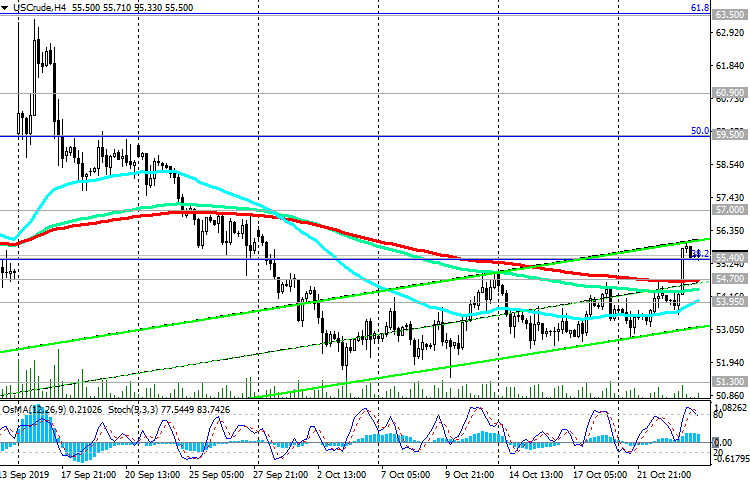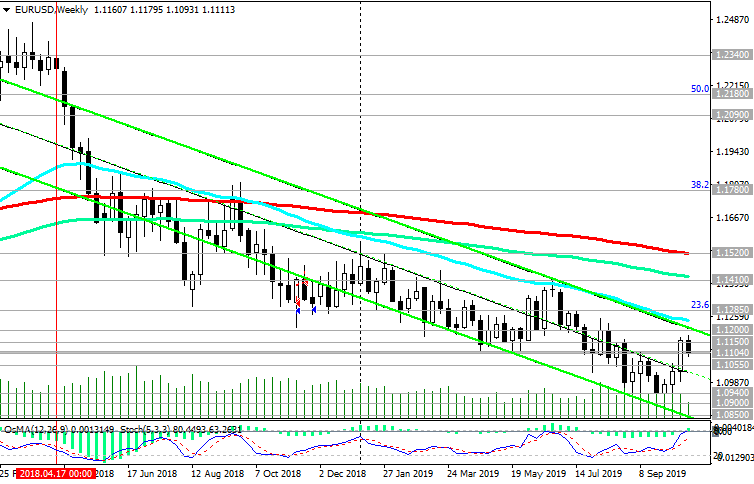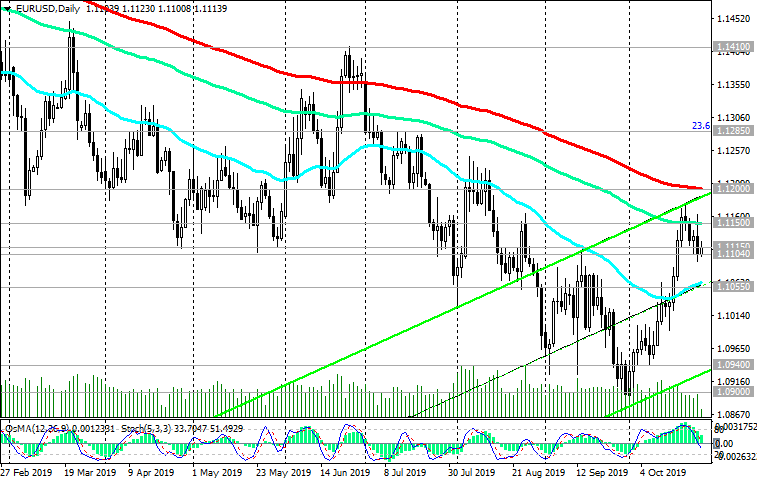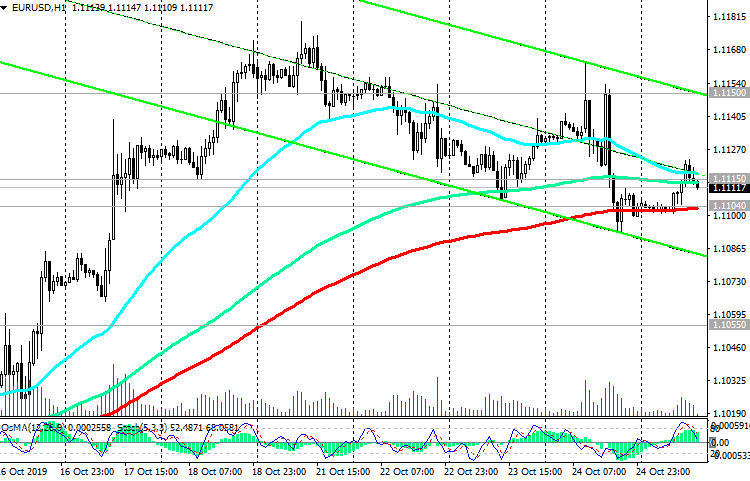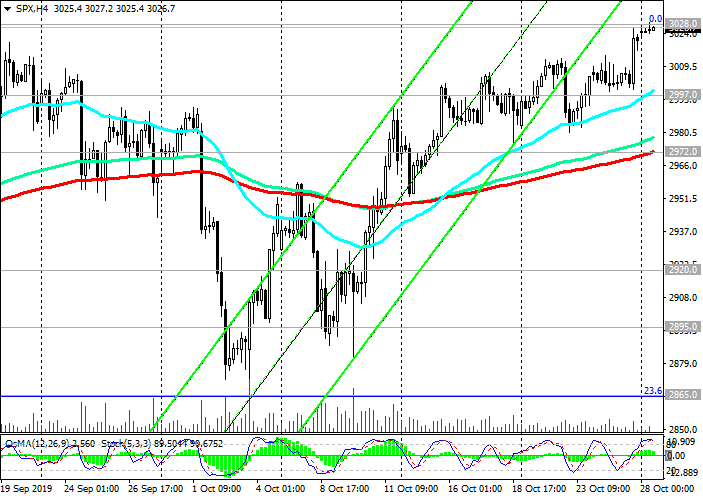TifiaFX
Established member
- Messages
- 641
- Likes
- 0
EUR/USD: Eurodollar resumed decline
10/02/2019
Eurodollar resumed decline after rising on Tuesday. According to the Institute for Supply Management (ISM) on Tuesday, the Purchasing Managers Index (PMI) for the US manufacturing sector fell to 47.8 in September from 49.1 in August, reaching a minimum since June 2009 (forecast was 50.1) . Index values above 50 indicate an increase in activity, while values below 50 indicate a decrease.
US President Donald Trump reacted to the weak ISM data with another criticism of the Fed. On Tuesday, Trump tweeted that Fed President Jerome Powell "has allowed the dollar to strengthen so much, especially against ALL currencies, that has a negative impact on our producers". “They are the main enemies of the manufacturers”, Trump said.
After weak ISM data, the likelihood that the Fed, after all, will lower the interest rate by another 25 basis points at the December meeting, has increased.
On Wednesday, the dollar is recovering its position in the foreign exchange market. At the start of the European session, DXY dollar index futures are trading near 99.01, 21 pips above today's open price.
Now, after the publication of disappointing data on manufacturing activity from ISM on Tuesday, investors will more closely monitor the publication on Friday (at 12:30 GMT) of data from the US labor market.
It is expected that US unemployment in September remained at the same level of 3.7%, which corresponds to long-term lows, and the number of new jobs outside the agricultural sector of the US economy was 140,000 (against +130,000 in August). If the data is confirmed or is better than the forecast, the dollar will receive a good incentive for further strengthening.
At the beginning of the European session on Wednesday, the EUR / USD pair was trading near 1.0920.
The growth of the Eurozone economy has been weakening since the beginning of 2018, which forces the ECB to actively support the European economy, lowering the interest rate and expanding quantitative easing.
In early September, the ECB lowered its key interest rate, which was already in negative territory, and resumed the bond purchase program. The ECB leaders promised to keep these measures in force, "until we see that the inflation prospects are stably in line" with reaching the target level.
In general, the long-term negative dynamics of EUR / USD remains, which speaks in favor of sales of this currency pair.
The breakdown of the local support level of 1.0900 will trigger a deeper decline and will direct EUR / USD towards 1.0850, 1.0800 marks.
In an alternative scenario and in case of breakdown of the short-term resistance level of 1.0953 (EMA200 on the 1-hour chart), EUR / USD will go towards the resistance level of 1.1026 (EMA200 on the 4-hour chart and the upper border of the downward channel on the daily chart). Growth above this resistance level is unlikely.
Support Levels: 1.0900, 1.0850
Resistance Levels: 1.0953, 1.1000, 1.1026, 1.1045, 1.1067, 1.1090, 1.1115
Trading Recommendations
Sell by market. Stop-Loss 1.0960. Take-Profit 1.0900, 1.0850, 1.0800
Buy Stop 1.0960. Stop-Loss 1.0890. Take-Profit 1.1000, 1.1026, 1.1045, 1.1067, 1.1090, 1.1115
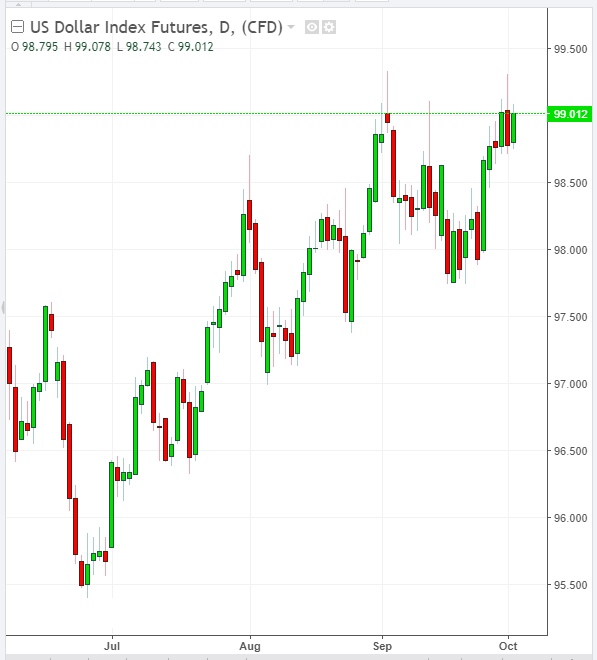
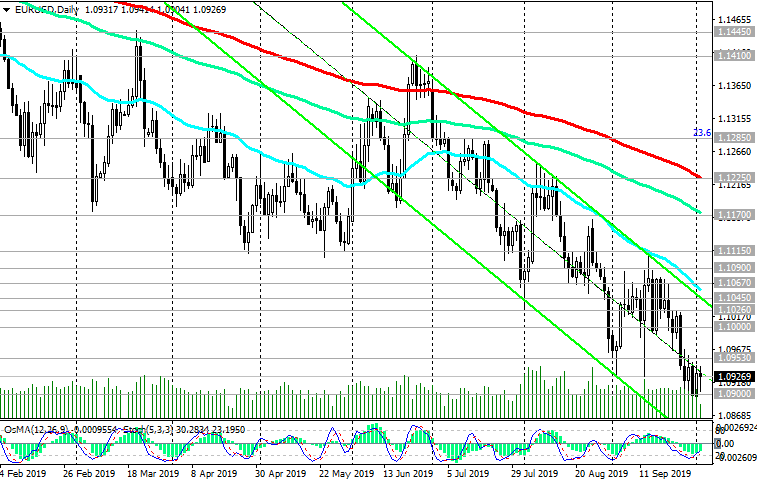
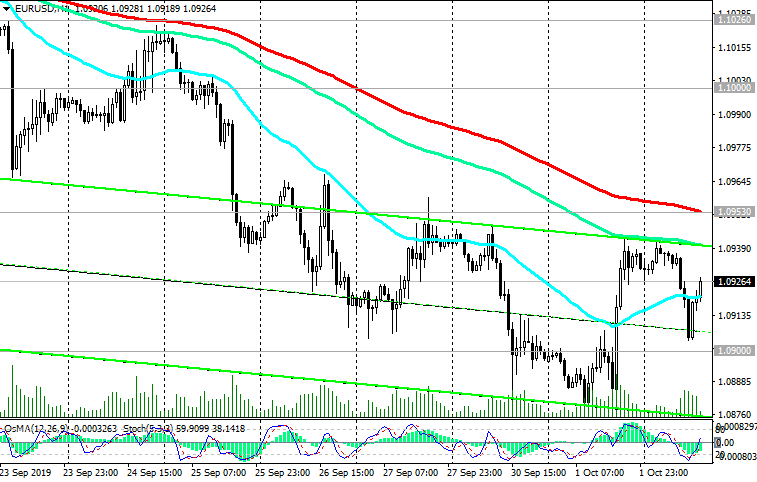
10/02/2019
Eurodollar resumed decline after rising on Tuesday. According to the Institute for Supply Management (ISM) on Tuesday, the Purchasing Managers Index (PMI) for the US manufacturing sector fell to 47.8 in September from 49.1 in August, reaching a minimum since June 2009 (forecast was 50.1) . Index values above 50 indicate an increase in activity, while values below 50 indicate a decrease.
US President Donald Trump reacted to the weak ISM data with another criticism of the Fed. On Tuesday, Trump tweeted that Fed President Jerome Powell "has allowed the dollar to strengthen so much, especially against ALL currencies, that has a negative impact on our producers". “They are the main enemies of the manufacturers”, Trump said.
After weak ISM data, the likelihood that the Fed, after all, will lower the interest rate by another 25 basis points at the December meeting, has increased.
On Wednesday, the dollar is recovering its position in the foreign exchange market. At the start of the European session, DXY dollar index futures are trading near 99.01, 21 pips above today's open price.
Now, after the publication of disappointing data on manufacturing activity from ISM on Tuesday, investors will more closely monitor the publication on Friday (at 12:30 GMT) of data from the US labor market.
It is expected that US unemployment in September remained at the same level of 3.7%, which corresponds to long-term lows, and the number of new jobs outside the agricultural sector of the US economy was 140,000 (against +130,000 in August). If the data is confirmed or is better than the forecast, the dollar will receive a good incentive for further strengthening.
At the beginning of the European session on Wednesday, the EUR / USD pair was trading near 1.0920.
The growth of the Eurozone economy has been weakening since the beginning of 2018, which forces the ECB to actively support the European economy, lowering the interest rate and expanding quantitative easing.
In early September, the ECB lowered its key interest rate, which was already in negative territory, and resumed the bond purchase program. The ECB leaders promised to keep these measures in force, "until we see that the inflation prospects are stably in line" with reaching the target level.
In general, the long-term negative dynamics of EUR / USD remains, which speaks in favor of sales of this currency pair.
The breakdown of the local support level of 1.0900 will trigger a deeper decline and will direct EUR / USD towards 1.0850, 1.0800 marks.
In an alternative scenario and in case of breakdown of the short-term resistance level of 1.0953 (EMA200 on the 1-hour chart), EUR / USD will go towards the resistance level of 1.1026 (EMA200 on the 4-hour chart and the upper border of the downward channel on the daily chart). Growth above this resistance level is unlikely.
Support Levels: 1.0900, 1.0850
Resistance Levels: 1.0953, 1.1000, 1.1026, 1.1045, 1.1067, 1.1090, 1.1115
Trading Recommendations
Sell by market. Stop-Loss 1.0960. Take-Profit 1.0900, 1.0850, 1.0800
Buy Stop 1.0960. Stop-Loss 1.0890. Take-Profit 1.1000, 1.1026, 1.1045, 1.1067, 1.1090, 1.1115





